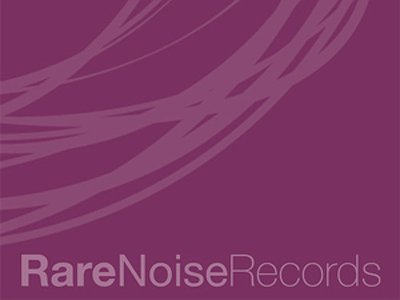What are the most important conclusions you've drawn from the changes in the music-, music-PR- and music-journalism landscape? How do they affect labels in general and your own take on running a label in particular? What role do social media play for your approach?
Communication is paramount, and we have four PRs covering US, UK, Germany, France and Italy (and a myriad of contacts in between) which serve the press release by release. The effort is gargantuan, given that we release about 12-14 albums per year. I personally favour the PR approach over the advertising approach, as I would rather pay for competent humans to advocate our artists’ releases with relevant and engaged members of the press, who will then write about them with competence and conviction, rather than pay for visual space. There may be a time when this approach will change, but then only when the name of the label will be so well known, as to make a switch to advertising relevant (see, for example ECM).
Social media is obviously very important, both by the label, as well as the artists (whom we always encourage to work on that part of the equation).
How do you make use of technology? In terms of the feedback mechanism between technology and creativity, what do humans excel at, what do machines excel at?
Again, a deep and broad question, running the risk of engaging me for five thousand words … In the narrowest sense, RareNoise uses all the ‘basic’ commercial and promotional tech expected as a member of its community – independent e-commerce store, social media channels (visual and text based), third party stores, targeted email community building.
More broadly, on the artistic side, we engaged in the past with new audio recording and mixing as well as live audio paradigms. Bob Belden’s Animation released a 3D60 (a binaural audio) version of ‘Asiento’, the band’s first release on RareNoise. We then collaborated with them to produce an ambisonic live performance in London, in collaboration with acoustic engineer Serafino DiRosario.
Both efforts, though valiant, were financially unsatisfactory; as such they taught us the lesson of patience with regards to the early adoption of technology.
What do machines excel at vs. humans is a pretty tough question to answer, as the present is ripe with misconceptions about what artificial intelligence truly is.
We certainly live in times, where data is harvested in gargantuan quantities, and fed into more or less sophisticated machine learning frameworks for the purposes of prediction. I contend, that this is not artificial intelligence, and though these systems may seem like they possess the ability to think independently, they only mimic intelligence. Maintaining a benign point of view, is to lighten humans of the burden of mundane tasks, enabling them to focus on more interesting/fruitful ones. I am though not sure this is truly the case today, as negative side of these trade-offs are only beginning to surface.
I keep an open mind, mostly spending time trying to discern the few facts from the massive fictions our culture is embedded into.
Can you take me through your process on the basis of a release that's particularly dear to you? How do you decide to release it, what did you start with, what sources did you draw from for all tasks related to it and how did the finished product gradually take shape?
Naked Truth – Avian Thug (RNR057).
Naked Truth is a quartet lead by Italian bass player Lorenzo Feliciati, with Roy Powell on keyboards, organs and electronics, Pat Mastelotto on drums and electric cornet player Graham Haynes. Avian Thug, released in 2015, was their third album on RareNoise (after Shizaru in 2011 and Ouroboros in 2014). I picked up the band from Stansted Airport at the end of their European tour in 2015 and drove them down to the studio in the deep South of England. We stayed there for about four intense days, which yielded some amazingly vigorous, at times overwhelming material. We eventually decided to get Bill Laswell involved in the mixing, with a mandate to ‘get to the bone of things’ – he did, and brutally so. After an initial moment of disorientation, the quality of the result became obvious to the band. The artwork was imagined by myself and Lorenzo Feliciati in a hotel lobby in the Genoa harbour during the Genoa Jazz Festival a few months later, and was spectacularly realised by Hungarian visionary Rok. The fact that all came together so spectacularly in full serendipity was the final sign, that the path chosen by ‘abandonment’ had been the correct one.
Could you take us through a day in your life, from a possible morning routine through to your work? Do you have a fixed schedule? How do the label and other aspects of your life feed back into each other - do you separate them or instead try to make them blend seamlessly?
Wake up 6.45, leave home at 7.30, bring my daughter to school by 8.30, head to work by 9/9.15, work non-stop to 6.30 (+/-). Go home, sleep, repeat
RareNoise is all-consuming, I have to admit. I forever thank my wife for truly being on my side with this enterprise.
There are many descriptions of the ideal state of mind for being creative. What is it like for you? What supports this ideal state of mind and what are distractions? Are there strategies to enter into this state more easily?
For me it’s a matter of being in a groove, in the midst of things, continually stimulated, continuously talking with people.
How is listening to the actual music and writing or reading about it connected? What do you achieve and draw from each experience personally? How do you see the relationship between improvisation and composition in this regard?
Yes, in as much as reading about some artists/some movement can fire me to acquire entire libraries. Listening to music allows me to sink into bliss, as such it is a crucial part of recharging batteries and allowing the brain to process information ‘behind the curtain’. It’s a bit like sleeping, if you will, only that one is dreaming with one’s eyes open.
There has been an exponential growth in promotion agencies and there is still a vast landscape for music magazines. What's your perspective on the music promo- and journalism-system? In how far is it influencing your choice of artists, in how far is it useful for potential buyers, in how far do you feel it is possibly undermining your work?
A great deal of respect – very very tough job, we work very hard with numerous journalists and publications as well as a multitude of blogs, and believe they play an absolutely crucial role in developing the ecosystem I mentioned in the answer to a previous question. Theirs is a really tough job, and we seek to entertain the best possible relationship with them.
Promos are just an instrument in this relationship.
Art can be a purpose in its own right, but it can also directly feed back into everyday life, take on a social and political role and lead to more engagement. Can you describe your approach to art?
Art for me is continual exercise, application, focus, attention to detail, layering of bricks through a colour or a visual shape or an auditory shape. It is also a telescope into possible futures, and a microscope into the pain that goes unseen or unheard. It is essential, it is global, it is human. It joins us when we are about to fall apart. It is crucial and should be continually fostered and encouraged, whatever one’s ability and means are to do so.
It is remarkable, in a way, that we have arrived in the 21st century with the basic concept of labels still intact. Do you have a vision of labels, an idea of what they could be beyond their current form?
Labels are essential, provided they add value. If they detract, they expire. When they add value to the chain, by opening new doors, by offering points of view of value, they thrive. To be honest, it was always thus, though the scale may have changed.



